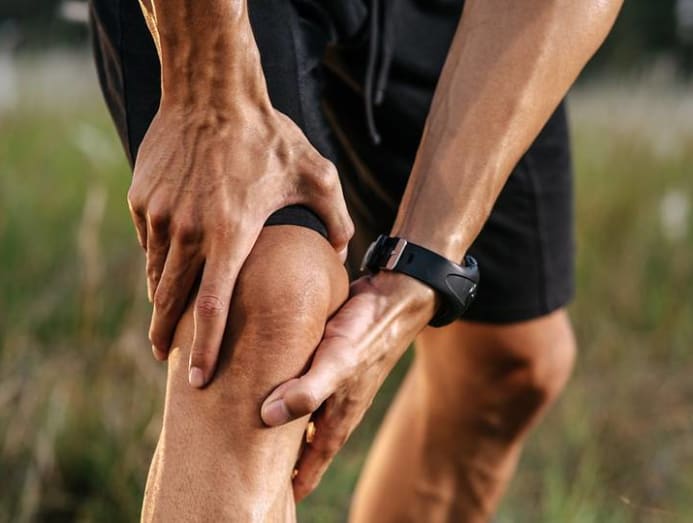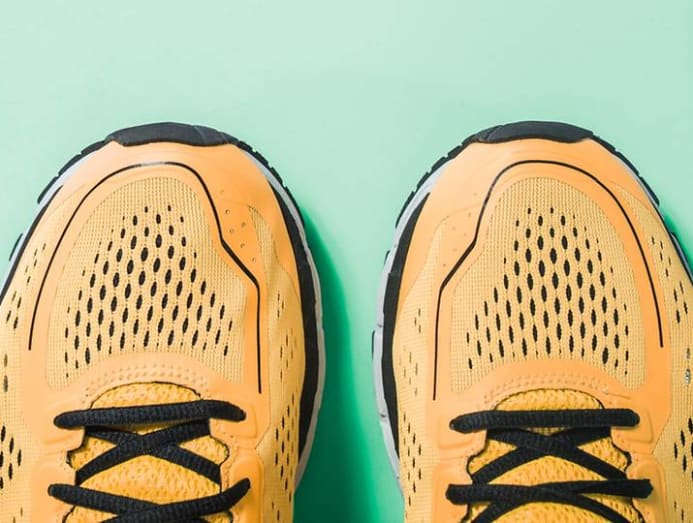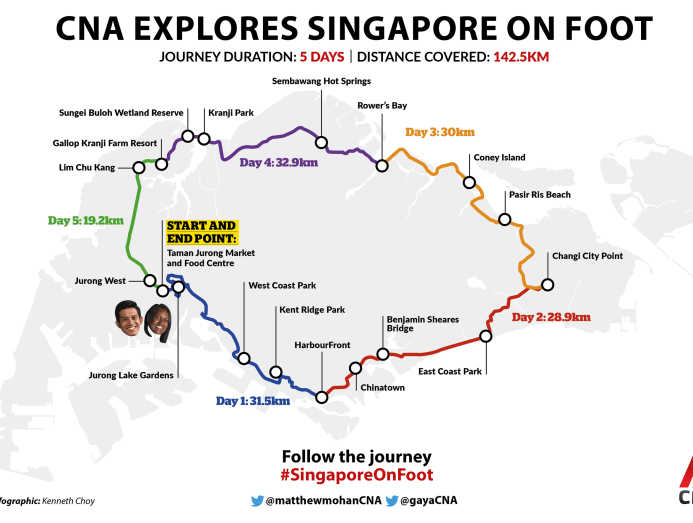Time to go for a walk? You’ll burn calories, lose weight, de-stress and improve knee pain
Walking around Singapore isn't just a cool thing to do on weekends. It's got a lot of health and mood-lifting benefits. CNA Lifestyle asks the experts for some helpful tips.

(Photo: Freepik/nensuria)
Everyone seems to be going on walks these days. From celebrities such as the queen of Caldecott Zoe Tay – who joined CNA’s recent Singapore On Foot adventure – to your stiletto-slinging and outdoors-adverse colleague who has taken to MacRitchie Reservoir like a Louboutin sale, walking is no doubt the workout trend du jour.
And it’s easy to see why. It’s more doable than running. You can still chat and Instagram on your trek with friends. And a change of scenery from the usual four walls at home isn’t that bad. Best of all, you’re doing your body lots of good.
For one, walking boosts your calorie burn and you could potentially walk your way to a more svelte figure.
"For reference, 10,000 steps equate to approximately 300 to 500 calories, depending on walking speed, body size and terrain," said adjunct associate professor Benedict Tan, the chief of Changi General Hospital's Sport & Exercise Medicine department. For a bigger caloric burn, increase your walking speed and pick hilly terrains, he suggested.
Related:
Admittedly, walking burns fewer calories than jogging and running because "caloric expenditure is dependent on speed", said Dr Tan. "Running burns more calories than jogging, which in turn, burns more calories than walking, for the same duration."
The good news is, you can make up for the lower calorie expenditure of walking by covering a longer distance, he said.
‘CLOSEST THING TO A WONDER DRUG’
Weight loss aside, there are other benefits that come with walking, which has been described as “the closest thing we have to a wonder drug" by Dr Thomas Frieden, the former director of the Centers for Disease Control and Prevention in the US.
And he’s not exaggerating – the activity has been found to counter weight-promoting genes, reduce your chocolate cravings, cut your risk of developing breast cancer and boost immune function by respective studies.

Even your memory and mood get a lift as research has found that those who walk have better memory and focus as well as produce more stress-relieving hormones such as endorphins.
Living longer isn't a bad side-effect either. Walking three hours a week has been associated with an 11 per cent reduced risk of premature death compared with those who did little or no activity, according to a review of studies published in 2014 in the International Journal Of Behavioral Nutrition And Physical Activity.
For reference, 10,000 steps equate to approximately 300 to 500 calories, depending on walking speed, body size and terrain.
Unless you want to explore other parts of Singapore, there is also no need to vary your walking route to continue reaping those benefits. The key, according to a study, is to take "a fresh look at objects, moments and vistas" that surround you during your walk – even if it's just in the park downstairs. That change in perspective could be just what you need to feel happier.
"There can be benefits even if the walking route remains the same, just as one can continue to derive pleasure even if he is listening to Mozart for the 10th time," said Dr Tan.
BUT WHAT IF I HAVE KNEE PAIN?
Many middle-agers suffer from knee pain due to the natural wear and tear of the joint (also known as osteoarthritis) but that doesn’t mean walking is off the table.
In fact, for those with such knee pain, walking is recommended to maintain knee function, said Dr Alan Cheung, an orthopaedic surgeon with Mount Elizabeth Novena Hospital.
"Walking can reduce stiffness and improve muscle tone. It can also improve knee symptoms and quality of life. It is a low-impact, easy and free activity that most people can perform," he said.

But before you enthusiastically embark on a weekend walking expedition, it is worth seeing your doctor for a check-up to assess your general health and suitability for exercise, said Dr Cheung.
For a start, walk for 30 minutes and build up the distance gradually over time if you're not used to exercise. "Avoid going up and down steep slopes or lots of stairs as this can make your knee pain worse," said Dr Cheung.
PREPPING FOR YOUR WALK
Even more reason to walk? You don't have to spend a lot of money on fancy footwear. "A simple, well-fitted running trainer will do," said Dr Cheung.
Just make sure that your shoes have firm, cushioned soles to absorb impact, and enough room at the front of the foot so your toes aren't squeezed together.
But leave your slippers at home. "I would not recommend walking in flip-flops as they do not provide any heel cushioning, shock absorption or arch support for your feet," he said.

It is a good idea to keep yourself hydrated, and a 500ml to 1,000ml water bottle is usually enough to bring on a short walk, said Dr Cheung.
"You may consider bringing some snacks such as nuts or dried fruit for the trip. Personally, I always plan my walks so that I can have a rest stop, and purchase drinks, snacks or even a meal along the way."
For a simple walk in a well-populated area, Dr Cheung recommended packing a hiking stick (especially if you have knee pain), hat, sunscreen, insect repellent, sunglasses, emergency contact details, any necessary prescription medicine as well as earphones, power bank and some waterproof gear to keep your gadgets dry.
If you're feeling adventurous and heading into a jungle or sparsely populated area, he recommended adding a torch, first aid kit, spare clothing, map and compass (just in case Google Maps decides to take a break before you), whistle, food and water.
"Always inform someone of your intended route in case you get lost," he said.

LET’S GO!
Before you take that first step, there are a few tips to help you get off on the right foot – especially if you’re trying to get from Point Couch Potato to Point Regular Walker.
As a rule of the thumb, walk at half the intensity, frequency and duration relative to what you're used to doing, advised Dr Tan. "Over the weeks, progressively step up the intensity by 10 per cent each week."

“To monitor if your starting point or your rate of progression is excessive, take note of your post-exercise aches and soreness.
If you do not experience any soreness or muscle aches, it is likely that you were too conservative with your fitness routine," said Dr Tan. But if you have difficulty going about your daily activities, you may have been too ambitious with your walking routine.
Like Goldilocks, you want to strive for that in-between sweet spot: Bearable soreness that indicates you've put your muscles through a workout, but you can still comfortably go about your daily activities.






